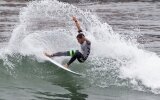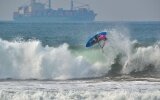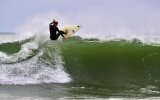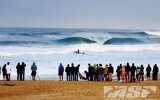- Magazine
- #readityourway
- Weekly Stories
- #shareyourstory
-
Adventure
- Abroad Travelling
- Africa Travelling
- Events
- Expos & Shows
- Festivals
- Fishing
- Free Diving
- Gliding
- Horse Riding
- Inspiring People
- Islands Travelling
- Kite/Windsurfing
- Motorbiking
- Motorised Water Sports
- Mountaineering
- Mountain Biking
- Off-road 4x4
- Off-road Motorbiking
- Paddling
- Performance Driving
- Photography
- Rock Climbing
- Rollerblading
- Sailing
- Scuba Diving
- Skateboarding
- Skydiving
- Snowboarding & Skiing
- Surfing
- Swimming
- Trail Running
- Wakeboarding
- Waveski Surfing
-
Sport
- Adventure Racing
- Fishing
- Free Diving
- Gliding
- Health & Fitness
- Horse Riding
- Inspiring People
- Kite/Windsurfing
- MMA
- Motorbiking
- Mountain Biking
- Multi-sport
- Off-road 4x4
- Off-road Motorbiking
- Paddling
- Performance Driving
- Photography
- Road Cycling
- Road Running
- Rock Climbing
- Rollerblading
- Sailing
- Scuba Diving
- Skateboarding
- Skydiving
- Snowboarding & Skiing
- Surfing
- Swimming
- Rugby
- Trail Running
- Triathlon
- Wakeboarding
- Waveski Surfing
- Lifestyle
- Calendar
Women Making Waves
Words and Photos: Claire Butler
Topic:
Surfing
Topic:
Waveski Surfing
Picture the sport of surfing and what usually comes to mind is a tanned male in board shorts gliding down the face of a beautiful barrelling wave, against a backdrop of palm trees. For a long time, this masculine association has misled women into believing that surfing is a sport best left to the guys. Yet, over the last decade, the sport has made some serious strides in crossing the great gender divide.

A trip to entry-level surfing beaches, such as Muizenberg in the Western Cape, will quickly reveal that the waves now belong equally to both genders. Attitudes are changing; recreationally, more men are encouraging their girlfriends and wives to join them in the surf and professionally, a number of South African females are making serious waves in the sport.
Surfing as a recreational sport for women started to gain worldwide mainstream popularity after the release of the 1959 movie, Gidget, which followed the adventures of a girl and her friends as they learnt to surf during a summer holiday. Then in the early '60s, the Beach Boys burst onto the scene with songs like 'Surfer Girl' and 'California Girls' that made specific reference to the growing presence of female surfers in their hometown of California. In South Africa, while there were a handful of women in the water, the uptake of the sport was significantly slower.
A defining moment in the history of female surfing in South Africa was in 1987 when South African surfer, Wendy Botha, won a world title on the international World Championship Tour. Suddenly, South Africa was known as a country capable of producing world-class female surfing talent. Despite Botha’s win on the professional scene, growth of the sport as a recreational activity for women remained sluggish in comparison to the rest of the world. That, however, was set to change in 2002 with the release of the pop culture female surf movie, Blue Crush.
Blue Crush arrived on the movie scene and did wonders for promoting female surfing, both locally and internationally. The movie portrayed surfing as the perfect blend of both femininity and female empowerment, and with the classic themes of friendship and love, it promoted the sport and also encouraged surfing as a lifestyle for women. As the movie soared in popularity, the beaches showed a massive increase in the number of females who were hitting the water and learning to surf. Not only did the movie make surfing appear to be accessible to the average female, it also promoted a strong mantra that women started to associate with surfing: take the risk, feel the rush, live your dreams. Before Blue Crush was released, female surfers were few and far between. Blue Crush literally crushed the preconception that surfing was a sport exclusively reserved for men (and the odd tomboy ‘surfer girl’). Hence, much of the popularity of the sport today for women can be ascribed to the movie’s influence.
The recreational scene
Support for female recreational surfing in South Africa is definitely growing. The most notable recent event was the Billabong Girls Get Out There initiative, which took place in December of last year. The event saw the popular surf brand, Billabong, hosting a number of national beach days that encouraged girls to get themselves to the beach and learn to surf for free - under the professional guidance of a few of the brand’s female team riders. These annual surf clinics coupled with a number of all-girl surf schools that are popping up at local beaches (like the Roxy Surf School for example) testify to the fact that women are enjoying the sport just as much as their male counterparts.
The professional scene
The competitive female surfing scene in South Africa paints a slightly different picture to that of the recreational one. While South Africa has managed to produce its fair share of professional female surfers, complaints of dwindling sponsorships, limited media coverage and a weak currency mean that going pro is a privilege afforded to only a special few. Former South African Champion and Springbok surfer, Tarryn Chudleigh, says that female professional surfing in South Africa currently sits in a very precarious position. “Local girls are surfing better than ever and pushing the boundaries both nationally and internationally,” she says, “but without support from major brands and grass-root contests, it may be harder than ever for our girls to achieve without this solid backing.”
Yet, despite tough market conditions, 2013 is already proving to be a promising year for South African females competing internationally. Southern Cape surfer, Bianca Buitendag, qualified to compete on the World Championship Tour (WCT) at the end of 2012; a tour that is reserved for the world's top 17 female surfers only. Buitendag will be the sole South African female on the tour this year - an incredible achievement considering that South Africa currently only has two male surfers competing on the Men’s World Championship Tour, which features a much larger pool of surfers (34). KwaZulu-Natal’s Sarah Baum has recently started her World Tour campaign on the World Qualifying Series (WQS); a series of contests that surfers need to compete in to try and qualify for a spot in the top 17. Baum had an impressive start with a 5th place finish in the first event of this year, the Breaka Burleigh Pro in Australia, which took place in January. In the meantime, Buitendag kicked off her quest for a world title with the Roxy Pro, which took place in March on Australia’s Gold Coast.
The female edge
As is the case for most sports, gender equality will always be questioned. But when trying to determine what actually makes female surfers different, it’s difficult to pinpoint. It certainly isn’t a question of talent, nor is it a question of commitment or love for the sport - the number of girls in the water and the quality of professional female surfers coming out of South Africa certainly proves this. As a regular female face in the line-up, Tarryn Chudleigh says, “I honestly don’t think there is a huge difference between the guys and us. At the end of the day, whether we’re male or female, beginner or pro, we all surf for the same reason: the pure love and joy we get from being in the water and riding waves. And that’s what ultimately defines a surfer!”
Despite the difficulties facing professional surfing for South African females, the recreational scene is flourishing. A lot of attention has been placed on growing the sport, particularly from a grass-roots level. Tarryn Chudleigh encourages any female to get in the water and experience firsthand the amazing sport that surfing is. “Start out at a beach like Muizenberg in Cape Town”, she advises, “as there are tons of surf schools there to cater to your every need.”
Surfing as a sport bears a life lesson for every woman. As famously quoted by Jon Kabat-Zinn, 'You can’t stop the waves of life, but you can learn to surf', and as local female surfers have proven, women can actually make waves.
dinFO
For anyone wanting to catch some of the local professional girls in action over the next two months, below is the 2013 surfing calendar from Surfing South Africa’s website (www.surfingsouthafrica.co.za) with information on a number of events to watch out for on. You can also follow the girls on the international scene by visiting the Association of Surfing Professionals’ website: www.aspworldtour.com.
Issue:
Issue 24 Apr'13
Related content
|
|
|
|
|
|
|
|
|
|










